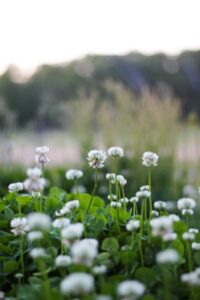Introduction:
Controlling weeds in non-cropped environments, including gardens, lawns, driveways, and sidewalks, is a multifaceted endeavour requiring a nuanced understanding of various techniques and strategies. Weeds, defined as unwanted plants growing in areas where they are not desired, can compete with desirable vegetation for resources, detract from aesthetic appeal, and even pose ecological threats if left unmanaged. Effective weed control in non-cropped situations demands a combination of mechanical, cultural, and chemical methods tailored to the specific characteristics of the environment and the types of weeds present.
Mechanical Control:
Mechanical methods involve physically removing weeds or disrupting their growth. Hand pulling is a straightforward approach, requiring nothing more than manual labour or basic hand tools like trowels or weeders. It’s particularly effective for small-scale infestations or in areas where precision is necessary to avoid damaging desirable plants. Mowing is another commonly employed mechanical control method, especially in grassy areas. Regular mowing prevents weeds from flowering and setting seed, thereby reducing their spread. Mulching, the application of organic or synthetic materials to the soil surface, inhibits weed growth by blocking sunlight and preventing weed seeds from germinating. Additionally, tilling, or mechanically turning over the soil, disrupts weed growth and exposes weed roots to desiccation and decomposition. However, caution must be exercised as tilling can also bring buried weed seeds to the surface, leading to new weed growth.
Cultural Control:
Cultural methods aim to create conditions that are unfavourable for weed growth while promoting the health and vigour of desirable plants. Improving soil health through practices such as composting, organic matter incorporation, and proper pH adjustment can enhance the competitiveness of desired vegetation against weeds. Planting dense ground covers or tall-growing plants shades out weeds and competes with them for nutrients and water, reducing their establishment and growth. Additionally, implementing proper watering and fertilization practices ensures that desired plants receive adequate resources to thrive, thus outcompeting weeds for space and nutrients.
Chemical Control:
Chemical control involves the use of herbicides to manage weed populations. Selective herbicides target specific types of weeds while sparing desired vegetation, making them suitable for use in areas with mixed plant populations. Non-selective herbicides, on the other hand, indiscriminately kill a broad range of plants and are typically employed in areas where no vegetation is desired, such as driveways and sidewalks. When using herbicides, it’s crucial to follow label instructions meticulously, taking precautions to minimize environmental impact and avoid unintended harm to desirable plants or non-target organisms. Organic alternatives to conventional herbicides, such as vinegar-based solutions or herbicidal soaps, offer environmentally friendly options for weed control in non-cropped situations.
Preventive Measures:
Preventive measures aim to minimize weed establishment and spread before they become problematic. Installing weed barrier fabrics or plastic mulches effectively suppresses weed growth by preventing weed seeds from germinating and establishing in the soil. Regular maintenance practices, including timely removal of weeds before they set seed and implementing proper sanitation measures to prevent the introduction and spread of weed seeds, play a crucial role in preventing weed infestations from taking hold.
Integrated Weed Management (IWM):
Integrated Weed Management (IWM) involves combining multiple control methods in a coordinated and strategic manner to achieve optimal weed control outcomes while minimizing environmental impact. By integrating mechanical, cultural, chemical, and preventive measures into a cohesive management strategy, IWM maximizes effectiveness and sustainability in weed control efforts. This holistic approach recognizes the complexity of weed management challenges and emphasizes the importance of tailored solutions based on site-specific conditions and objectives.
Conclusion:
In conclusion, effective weed control in non-cropped situations requires a comprehensive approach that encompasses mechanical, cultural, chemical, and preventive measures within an integrated management framework. By combining these strategies judiciously and adapting them to the unique characteristics of each environment and weed species, individuals can achieve long-term success in managing weed populations while promoting the health and vitality of desired vegetation.

